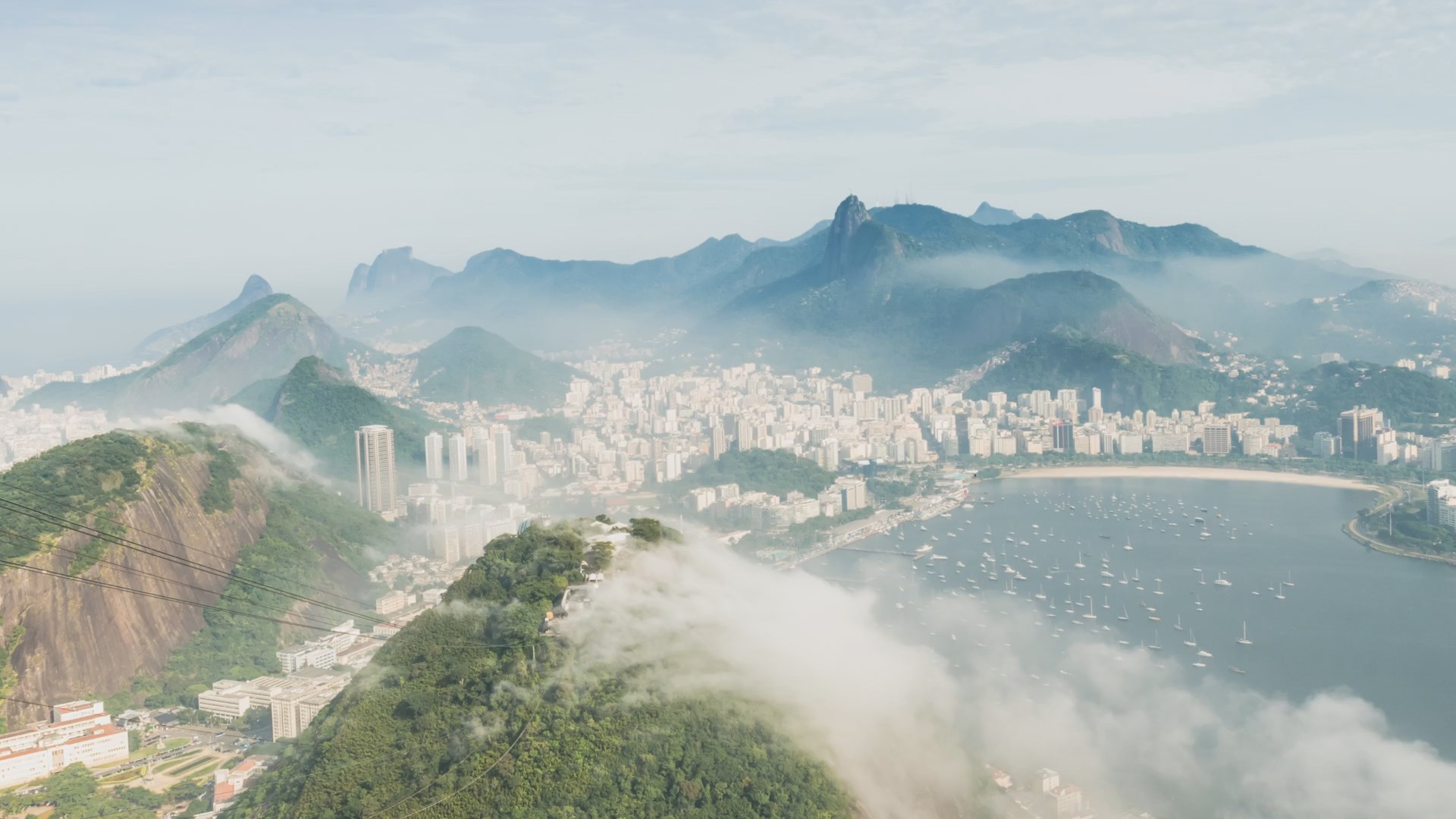For so many of us in the developed world, the seasons are defined by temperature. The freshness of spring, the heat of summer, the chill of autumn and the cold of winter. But for the billions of people on our planet that live in the tropics, the seasons are marked by the presence, and absence, of rain. The annual coming of the rains after months of drought, with the renewal of life from the giving water… And then, after months of rain and cloud, the sun reborn into blue skies as the next dry season begins.
This is the domain of the tropical wet and dry climates. This is the Tropical Monsoon, and the Tropical Savannah.
Description and Dynamics
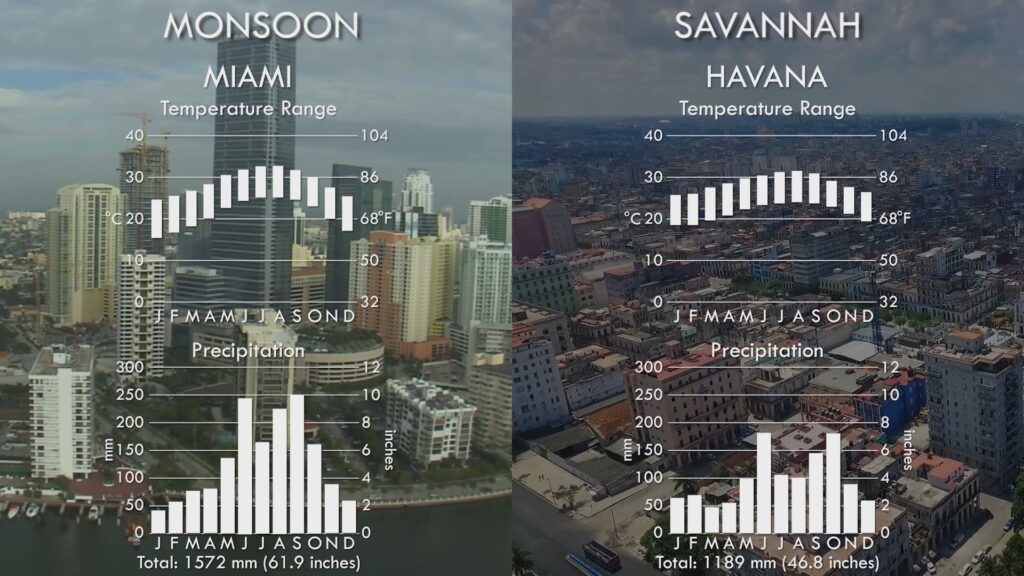
Monsoon areas are overall wetter or have a shorter dry season, Savannahs are drier overall or have a longer dry season.
In the last chapter we looked at the Tropical Rainforest climate zone, where rain occurs throughout the year. But most of the lands in the tropics experience some kind of drought, or reduction in rainfall during the year. The severity of this drought and the total amount of rain that falls in a year determines whether it comes under the classification of Monsoon or Savannah. Monsoon areas are overall wetter or have a shorter dry season, Savannahs are drier overall or have a longer dry season.
So what accounts for this variation in rain? In the tropics, the sun will be directly above you at noon at some point in the year. And if the sun is directly above, it means it’s heating that part of the earth more than any other, and that means rising air, the pulling in of moist air from the surrounding seas and oceans, and lots of rain. The band of the earth, where these winds come together has for centuries been called The Doldrums by sailors, because there is very little wind at this confluence, and could lead to weeks or even months of being stranded in a sailing ship. The rains follow this band as it tracks the sun above and below the equator throughout the year. In July, it’s summer in the North, so this band is located to the north of the equator, while in January it is at its furthest extent south of the equator. A more scientific term for the Doldrums is the Inter Tropical Convergence Zone (“ITCZ”).

Approximate position of Doldrums (ITCZ) in July
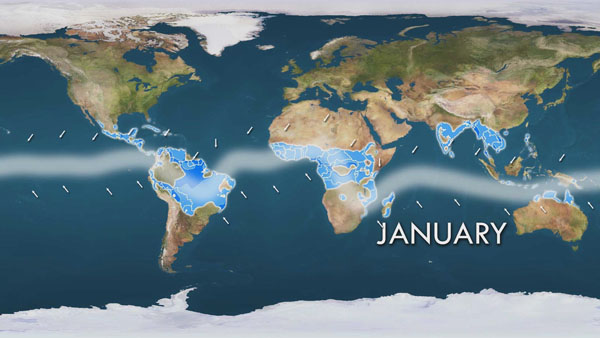
Approximate position of Doldrums (ITCZ) in January
The winds which come into this convergence are called the trade winds, named by those same sailors of centuries past, since they were so predictable, sailing ships could count on them to ply their trade. In the tropical wet and dry climate zones, these winds switch direction depending on whether the doldrums are to the north or south. When they originate from the ocean, they bring moisture, and rain. But when they come from the land, they are bone dry, and bring nothing to the land.
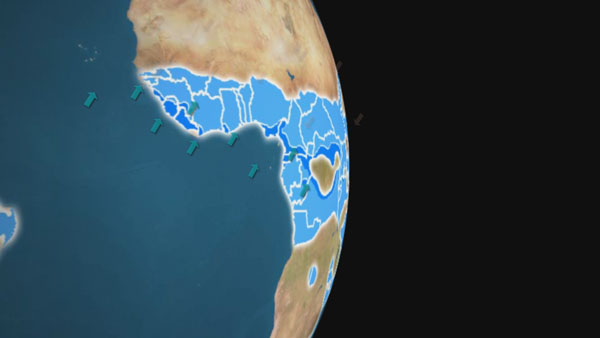
Trade winds in summer come from the ocean and bring rain
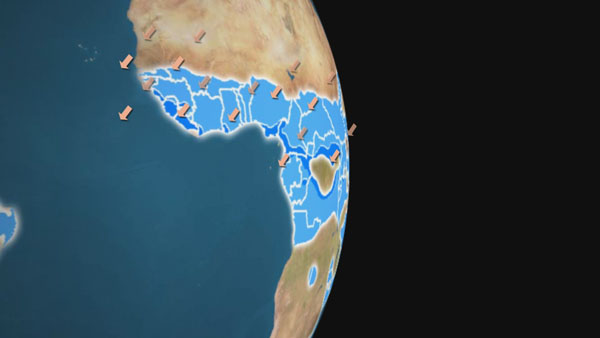
Trade winds in winter come from the land and are dry
Landscapes, Biomes and Agriculture
So what kind of landscapes do we find in these regions? Depending on the severity or longevity of the dry season, we can find anything from tropical forests to open grasslands. On the wetter side of this spectrum, we find the much of the jungle of the Amazon and South-East Asia. But such forests do not have as rich a biodiversity as the Tropical Rainforest. As the rainfall reduces the further out we go, we find less dense, drier forests mixed with grasses, the Savannah itself.
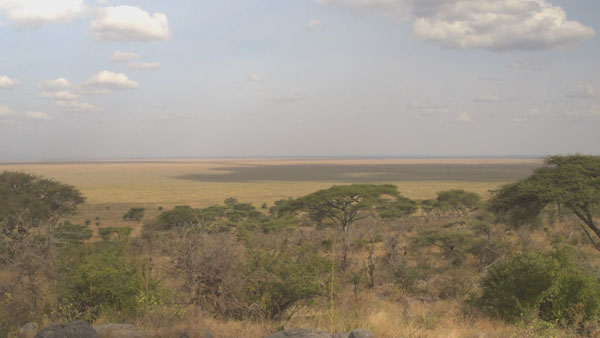
Mixed trees and grasslands landscape that is the definition of savannah
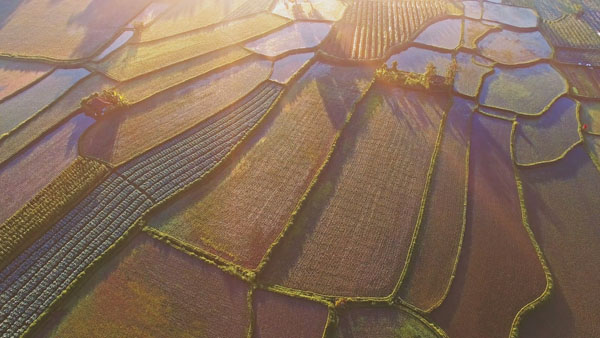
Rice paddies landscape in Asia
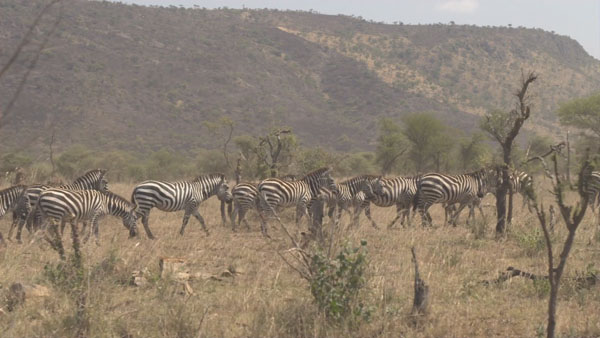
A herd of zebra on the African savannah
The tropical grasslands of Africa are perhaps some of the most iconic landscapes in the world. Here, the biodiversity of the Tropical Rainforest is exchanged for huge numbers of large herbivorous animals that trek for hundreds of miles each year to follow the rains and the green grass that feeds their vast numbers. And they themselves are followed by world famous predator species, who don’t want to let all that walking food go to waste.
Much of South-East Asia and India is given over to the production of rice, which excels in this climate, producing two or more harvests each year. Such productivity is one reason why Asian nations have such large populations compared to other parts of the world.
In Central America, the Caribbean and Brazil, sugar cane is the most famous of world crops that has dominated these areas for centuries. While in West Africa, we find much of the land given over to cocoa production. So… one could say we can thank the Savannah climate for that most favourite of foods – chocolate.

Global Distribution of the Tropical Wet & Dry Climate Zones
Where in the world do we find the Tropical Monsoon and Tropical Savannah Climate Zones?
So where in the world do we find the tropical wet and dry seasons? In the tropics, obviously, that is, between 23 degrees north and south of the equator.
Starting in the Americas, this zone encompasses the southern tip of Florida, much of southern Mexico, and most of Central America and the Caribbean. Large tracts of Venezuela, Brazil and lowland Bolivia are given over to savannah and tropical forest, and this climate zone accounts for almost half of all land area in South America, such is its extent.
In Africa, we find practically all of the West and Central African nations under the Savannah, along with Tanzania, Mozambique and Madagascar in the south east.
In Asia, most of southern India, Bangladesh and Sri Lanka is in this climate zone. The famous monsoon western coast of India experiences the most extreme wet and dry seasonal variation in the world, as you’ll see in the upcoming city graphs.
All of Burma, Thailand, Laos and Cambodia live within these zones, along with most of Vietnam and the Philippines.
Lastly, the northern coasts of Australia experience the monsoon at the opposite time of year to its more famous Indian brother.
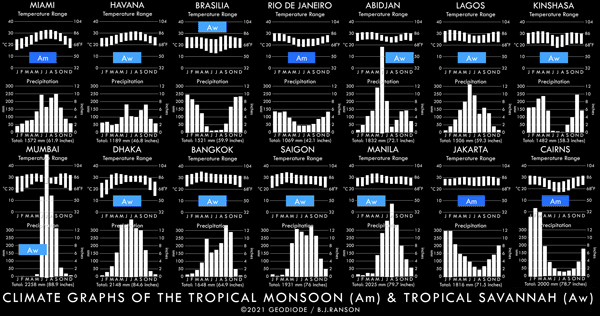
Climate graphs of notable cities experiencing tropical wet & dry climates
Notable Cities
So we talked about all those billions of people living in this climate zone. Well, most of these live in developing countries, and yet, we find enormous cities here. Some of these are world famous. Here are the biggest and brightest.
Coursework Questions
- What causes the Doldrums (or ITCZ) and why do they move across the tropics throughout the year?
- What are trade winds and what is their relationship to tropical wet and dry seasons?
- What are the Koppen codes for these climates? How do they differ from each other?
- What types of natural landscapes do we find in regions with tropical wet and dry climates? What exactly is savannah?
- How important are these regions for agriculture? List out some crops that grow here.
- List out some countries, regions and cities that experience tropical wet and dry climates.

